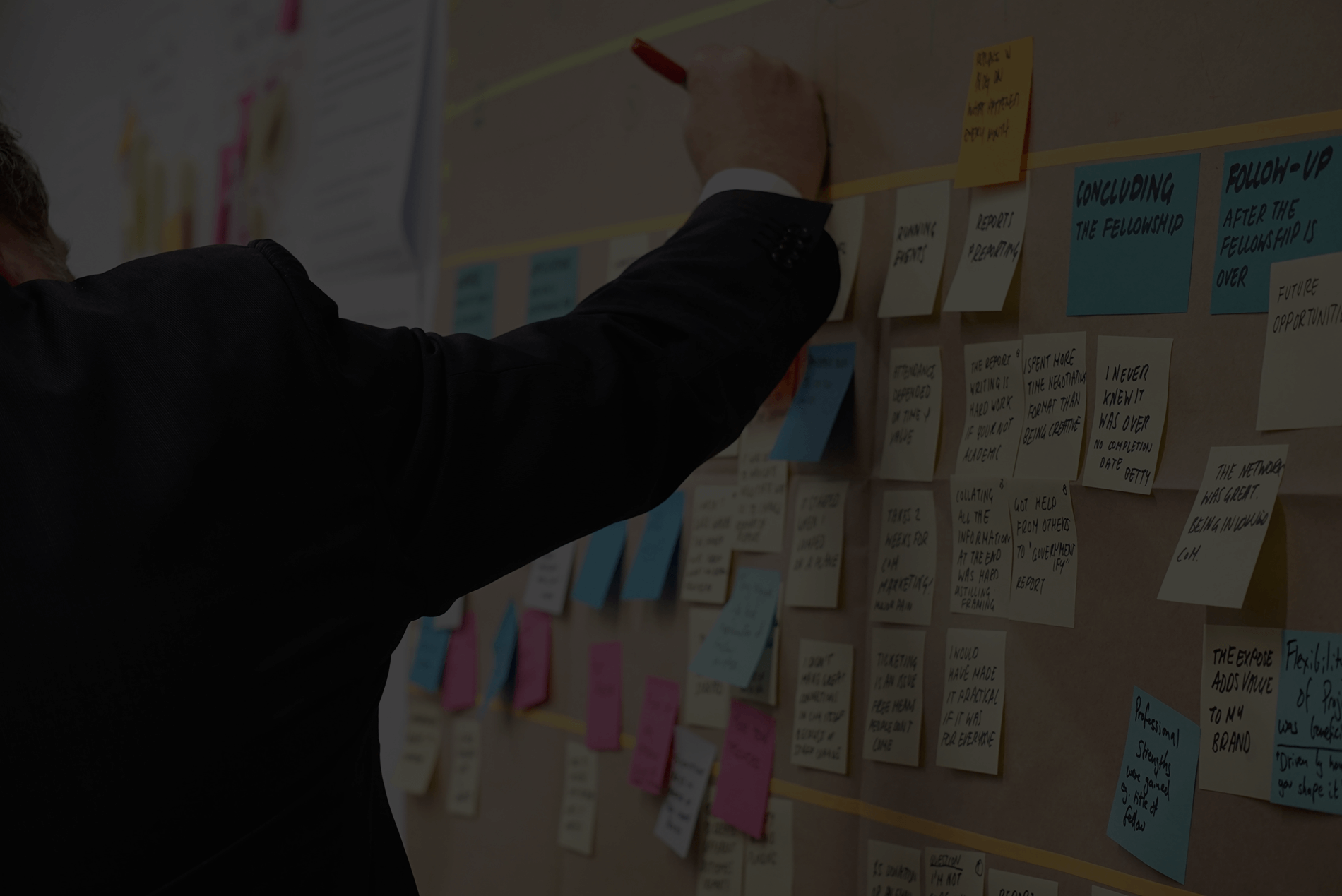Our QA Process
Many projects miss the mark by not meeting client expectations for Quality. At Harmonix Technologies, we use a Quality Assurance Plan to avoid this pitfall.
Our Team of Solution Architect’s & Design Engineers focus on developing a high quality, cost effective solution. We have processes and procedures that ensure our client’s needs are fulfilled on time.
Quality Plan
Many projects miss the mark by not meeting client expectations for quality. At Harmonix Technologies we use a Quality Plan to avoid this pitfall.
At Harmonix everyone on our team wants to design and develop a quality solution. At times our clients may not get the entire budget expected, but even then, we strive to build the best solution with the available funding.
We have found that in this environment many projects miss the mark for meeting the client’s expectations for quality. In our view one of the major reasons for this is that a project manager doesn’t think ahead about how they are going to manage quality on the project. This is the purpose of the Harmonix Quality Plan.
A Quality Plan is a way to identify our client’s expectations for quality and align our project management team with those defined success criteria. In this way we can measure and ensure that the expectations are measured and achieved. Our Quality Plan is typically created on larger engagements when the project is being initially defined or during the Analysis Phase.
The Analysis Phase is when you are gathering requirements and so it’s not uncommon to gather the client’s quality requirements at that time as well. The Quality Plan is also utilized to describe the processes and activities that will be put into place to ensure that quality deliverables are produced.
Project Management
At Harmonix we believe that project management is where the rubber meets the road. In complex multi-service networking the actual implementation must be carefully planned and communicated through our project management team. This is the mission critical element to our overall success on each engagement.
Our project management is one of our key competitive advantages. We deliver razor sharp project focus. The coordination of all installation assets and equipment deliverables is where we interface intimately with our customers; and it is here that we pay absolute attention detail in an effort to deliver projects on time, within budget, and with a high level of overall customer satisfaction.
Project Management excellence enables our organization to remain our client’s trusted partner over continual engagements and strengthens our long-term relationship.
Maintaining focus on long-term relationships with our clients allows us to move effectively through the inevitable bumps and rough spots within a project plan and timeline. Our primary goal is to remain customer centric and communicate effectively with all stakeholders within the project engagement. The fundamental premise of achieving excellence in project management states that the project manager’s greatest challenge is effectively balancing (or juggling) the components of time, cost, scope, quality, and the expectations for each. Below is the Harmonix project diamond, which signifies this balance.
Project Plan
Project Diamond
The fundamental premise of achieving excellence in project management states that the project manager’s greatest challenge is effectively balancing (or juggling) the components of time, cost, scope, quality, and the expectations for each.
The components of the project diamond have a symbiotic relationship. For example, when a client requests a change to the project’s scope that wasn’t agreed on in the requirement specifications, the project’s scope and quality change as this will impact all points within the diamond. As a result, the diamond’s shape will be skewed, graphically depicting a project out of control. The challenge is managing change while keeping the diamond’s shape intact. Project planning defines the diamond, while effective and efficient change and expectation management allows the Harmonix PM to manage it throughout the project’s life cycle. Effective project planning is not conducted in a vacuum. It must be carried out in coordination and cooperation with all appropriate stakeholders. The Harmonix project manager must manage their expectations throughout the process.
The project manager must constantly look for opportunities to create win- win relationships by negotiating work that must be accomplished. A project manager who declares, “this can’t be done in the time frame allotted” will meet with stiff resistance from client management. On the other hand, a project manager who can defend this statement with a solid understanding of the project’s scope, backed by a logical work breakdown structure; thoughtful estimate and project schedule; and concise risk analysis will be met with a response like, “Maybe you’re right. Help me to understand what you understand.” This is effective expectation management and how we at Harmonix define the development of win-win relationships. Once your project plan is in place, it’s much easier to manage your project diamond.
Project Process
Roles and Responsibilities of the Project Manager
The Role and Responsibilities of the Project Manager Simply put, the Harmonix Project Manager is “the” individual with the responsibility for managing the project. To get results, the project manager must relate well to: the people to be managed, the tasks to be accomplished, the tools available, the organizational structure, and the organizational environment, including the customer community.
Harmonix has identified six key competencies required of our “top gun” project managers:
1. Education and Experience in Project Management Organizations that undertake the management of very diverse projects must possess thorough knowledge of project management and implementation. Along with up to date formal training, the project manager should be an apprentice “on the job” before he or she is placed solely in control of managing a project. Remember, project management and implementation is a craft, not a science – you can’t quantify all of it. At some point, you’ll have to rely on your own intuition and experience to substantially ensure success. All in all, the project manager must possess the skill set to be able to manage their project, from inception to completion, using the organization’s software development process.
2. Negotiation and Communication Skills Another of the key competencies of a “top gun” project manager are his or her ability to effectively negotiate and communicate with senior management, direct reports on the project team, the client, supporting organizations, and other stakeholders who have a vested interest in the success of the project.
3. Planning and Organization Skill The project manager has direct control over this and can setup the necessary measures to “build the proper foundation” that will be a stepping-stone to project success. Coupled with proper planning, the project manager must be a good ringleader who minimally organizes the following: meetings, schedules, deliveries, financial statements, and various other plans to substantially ensure his or her project is targeted for success.
4. Effective Problem Solver Due to the complexity and diversity that may exist within a project (data migration project), the project manager is often called on to analyze problems and make timely, strategic decisions that can have a profound affect on the project – whether good or bad. The project manager should be skilled at being able to isolate the root cause of a problem at any given moment in a project, and if necessary enlist the help of his or her project team to “buy into” the solution.
5. Leadership Ability The best leaders spend much of their time just watching and taking it all in. They avoid jumping to conclusions or leaping to premature judgments. They try to understand what is needed and why. They are constantly learning from minute to minute as well as from year to year.
6. Aims for Excellence in All Work Although we believe much of how a project manager functions in his or her daily work is characteristic of their very nature, the project manager can learn to aim for no less than the best. The project manager, of all people on the project team, must strive for excellence in “all” project work, and expect no less than the same from his or her project team. Achieving excellence in a couple of areas, but missing the mark in others is not acceptable. For example, if the team meets a particular software delivery date and kept the expenditures within budget, but what the team delivered does not meet the quality expectations, as defined by the client, then we have missed the mark on achieving overall project excellence. It’s a tall order, but one that we should strive for. All in all, our seasoned project managers are good ringleaders. They know they must balance four elements of expectations – quality, schedule, cost and scope – at all times.



















